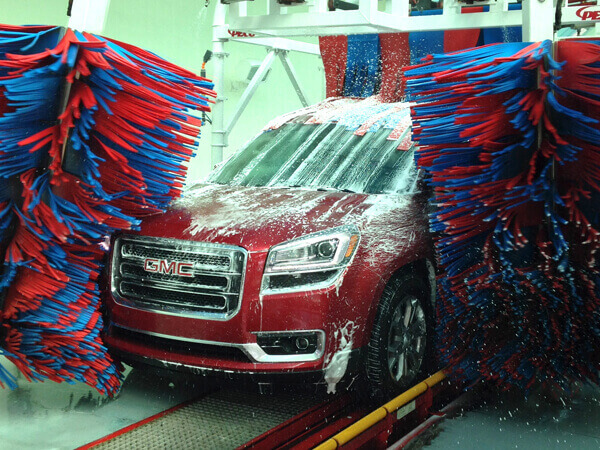Industry Commitment to Water Conservation
Over the years, automated car wash operators have dramatically cut back on the amount of water they use per average car clean by making adjustments to the equipment needed to clean your vehicle. These alterations include decreasing the size of spray nozzles, lowering the water pressure and being more diligent with leak detection within their machinery and repairing issues immediately.
According to the Canadian Carwash Association, if you were to give your car a wash by hand on the sidewalk or in the driveway using the old fashioned hose and bucket technique, you would use on average, 450 litres of water or more on that one car wash. In fact, running your garden hose for five minutes could use over 221 litres of water. Compare those numbers to the industry target for computer operated car washes of 150 litres of water used per average vehicle wash and it is two thirds less water wasted. Two thirds! To put that into even better perspective for you, an average shower with a low flow shower head uses about 10 litres of water per minute and an average bath uses up anywhere from 115 to 190 litres of water. In fact, the most water efficient car wash systems uses less water than what a typical home washing machine requires to get your clothes clean.
Industry Commitment to Protecting the Water Supply
Along with curtailing the amount of water used per car wash, the industry is also cognizant of what happens to the water after it has been used in the cleaning process. When you hand wash your vehicle in the driveway, the soap you’re using, even the ones labelled environmentally friendly, still go down the storm drains and make their way untreated, to local streams, rivers and lakes. And don’t forget to factor in the build-up of other contaminants like dirt laced with oil, grease, heavy metals and other toxic chemicals picked up in the tires and wheel wells during routine driving. That too all gets washed down the drain and flushed into local waterways.
At a professional, automated car wash, many of them have installed water reclamation systems to prevent water waste and interceptor drains are also used to help catch the contaminants in the water post-cleaning. Unlike with a sidewalk or driveway wash at home, all the post wash water at an automated centre is flushed into the sanitary water system which means it goes off to a treatment plant to remove pollutants before it gets sent back into the local water system.
Industry Commitment to Energy Efficient Operations
The car wash industry is a highly regulated one with good reason. Along with water conservation and water treatment and care, energy inefficiencies have also been addressed over the years and you’ll find the evolution of LED technology has also made its way into automated car wash operations. LED light bulbs, fixtures and circuit boards have been installed. Even research on where lighting sources should be placed within the car wash tunnel have been planned to make for a more efficient operation.
Safer for your Vehicle’s Finish
Several studies done over the past few decades in Europe and North America have shown that it is better for your vehicle’s paint and finish to avoid hand washing the car in the driveway or on the street and going to an automated car wash. Because of technological advancements in soft foam cleaners, there is less likelihood of your vehicle sustaining damage to the finish from abrasives in the cleaning device.


